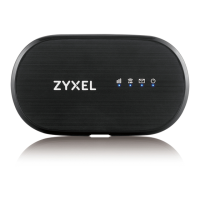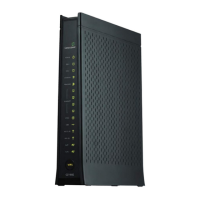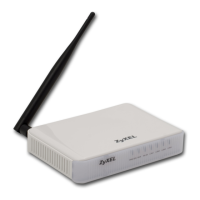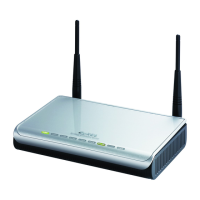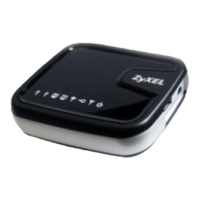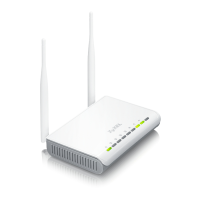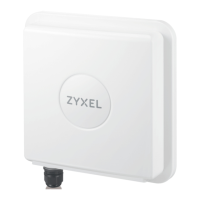Chapter 7 Wi-Fi
WAH7003 User’s Guide
42
The following table describes the labels in this screen.
Table 26 Wi-Fi > Basic
LABEL DESCRIPTION
Enable Select On to enable the wireless LAN of the WAH7003. Otherwise, select Off.
Mode Select 802.11 B Only to allow only IEEE 802.11b compliant WLAN devices to associate with
the WAH7003.
Select 802.11 G Only to allow only IEEE 802.11g compliant WLAN devices to associate with
the WAH7003.
Select 802.11 N Only to allow only IEEE 802.11n compliant WLAN devices to associate with
the WAH7003.
Select 802.11 B/G mixed to allow either IEEE 802.11b or IEEE 802.11g compliant WLAN
devices to associate with the WAH7003. The transmission rate of the WAH7003 might be
reduced when an 802.11b wireless client is associated with it.
Select 802.11 B/G/N mixed to allow IEEE 802.11b, IEEE 802.11g or IEEE802.11n
compliant WLAN devices to associate with the WAH7003. The transmission rate of the
WAH7003 might be reduced when an 802.11b or 802.11g wireless client is associated with
it.
Select 802.11 G/N mixed to allow IEEE 802.11g or IEEE802.11n compliant WLAN devices
to associate with the WAH7003. The transmission rate of the WAH7003 might be reduced
when an 802.11g wireless client is associated with it.
Channel Set the channel depending on your particular region.
Select a channel or use Auto to have the WAH7003 automatically determine a channel to
use. If you are having problems with wireless interference, changing the channel may help.
Try to use a channel that is as many channels away from any channels used by neighboring
APs as possible. The channel number which the WAH7003 is currently using then displays
next to this field.
802.11N
Channel Width
This field is available only when you set Mode to 802.11 N Only, 802.11 B/G/N mixed or
802.11 G/N mixed.
Select whether the WAH7003 uses a wireless channel width of 20MHz or 40MHz.
A standard 20MHz channel offers transfer speeds of up to 150Mbps whereas a 40MHz
channel uses two standard channels and offers speeds of up to 300 Mbps.
40MHz (channel bonding or dual channel) bonds two adjacent radio channels to increase
throughput. The wireless clients must also support 40 MHz. It is often better to use the 20
MHz setting in a location where the environment hinders the wireless signal.
Select HT20 if you want to lessen radio interference with other wireless devices in your
neighborhood or the wireless clients do not support channel bonding. Select HT20/40
Mixed to allow the WAH7003 to choose the channel bandwidth (20 or 40 MHz) that has
least interference.
TxPower Set the output power of the WAH7003. If there is a high density of APs in an area, decrease
the output power to reduce interference with other APs.
Beacon Interval When a wirelessly networked device sends a beacon, it includes with it a beacon interval.
This specifies the time period before the device sends the beacon again.
The interval tells receiving devices on the network how long they can wait in low power
mode before waking up to handle the beacon. This value can be set from20ms to 1024ms. A
high value helps save current consumption of the access point.
DTIM Period Delivery Traffic Indication Message (DTIM) is the time period after which broadcast and
multicast packets are transmitted to mobile clients in the Power Saving mode. A high DTIM
value can cause clients to lose connectivity with the network.

